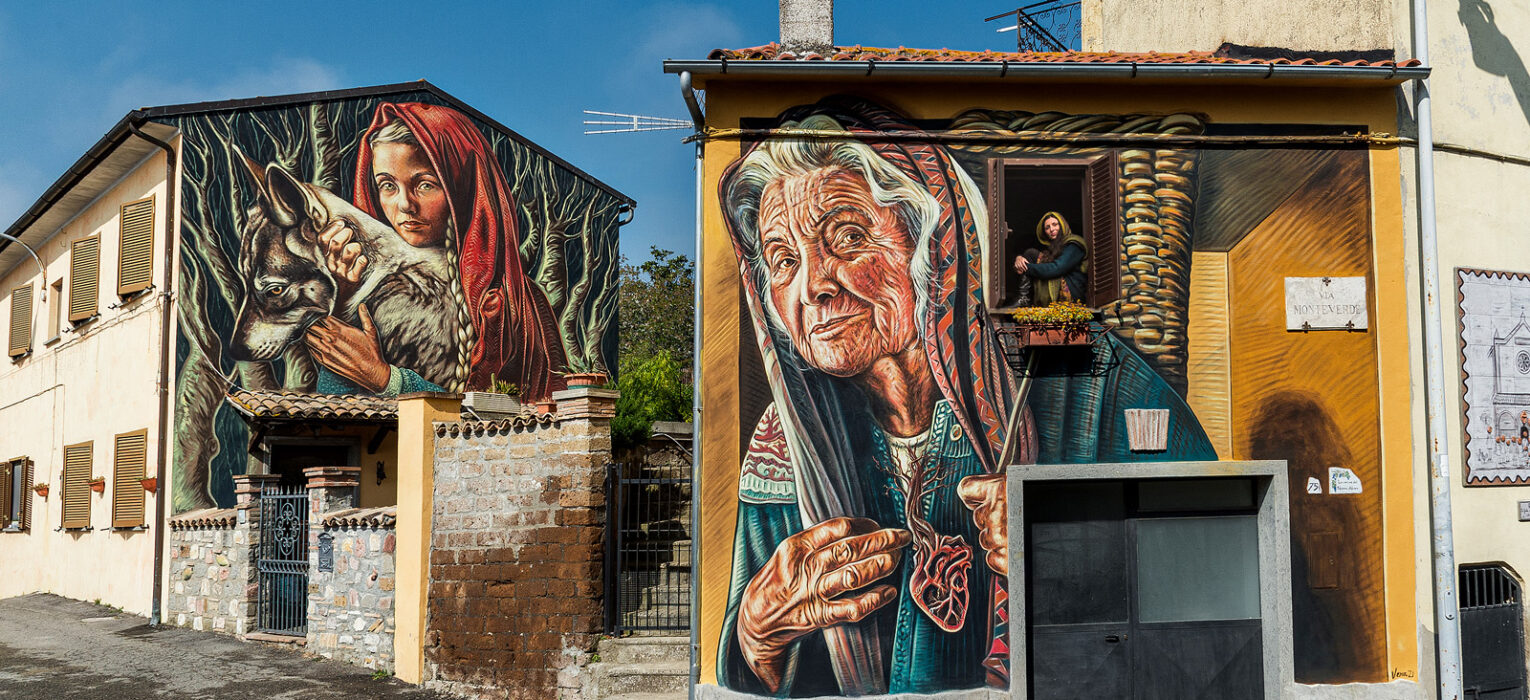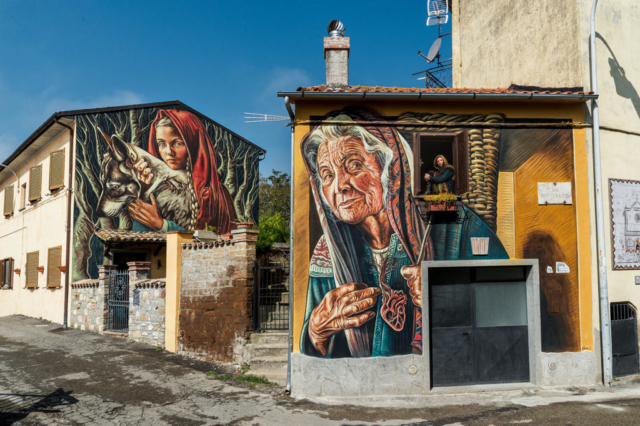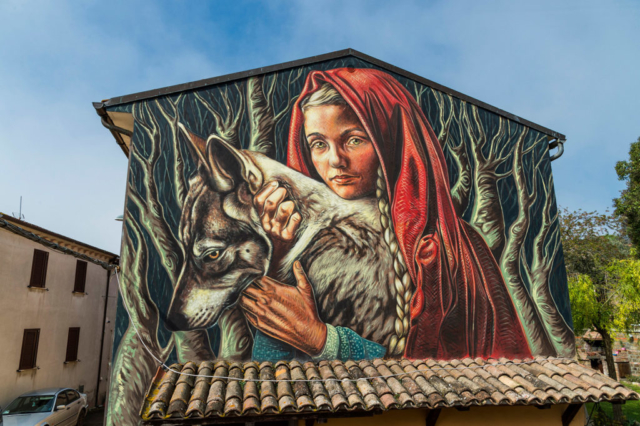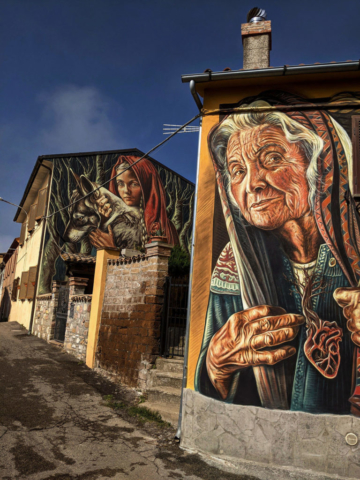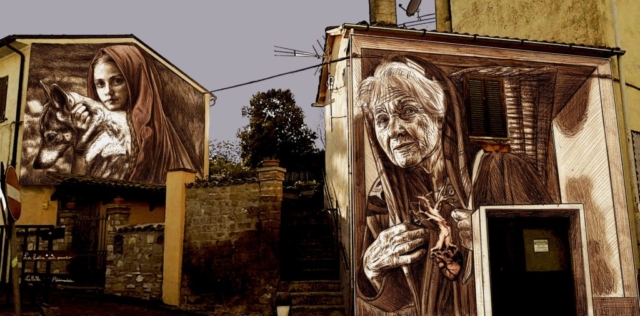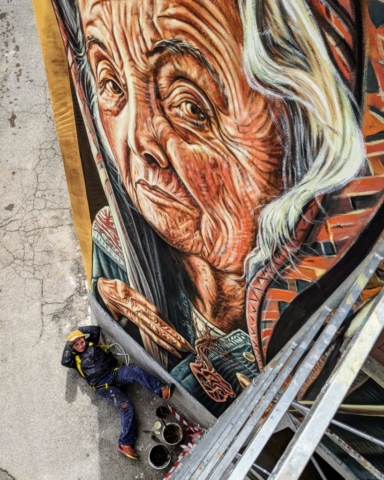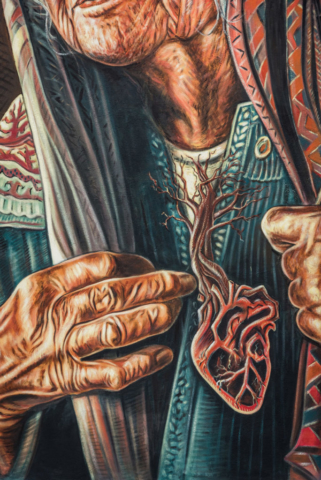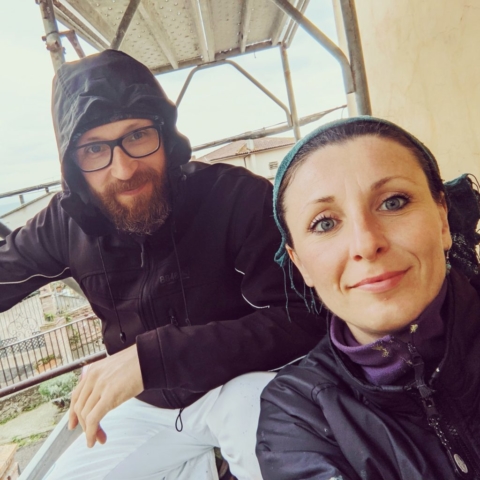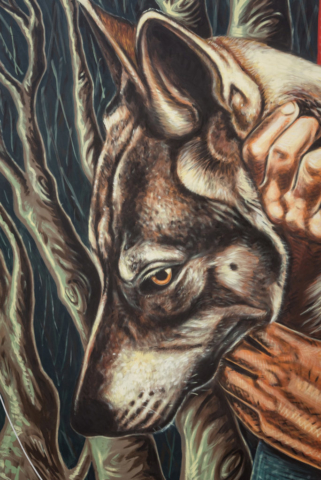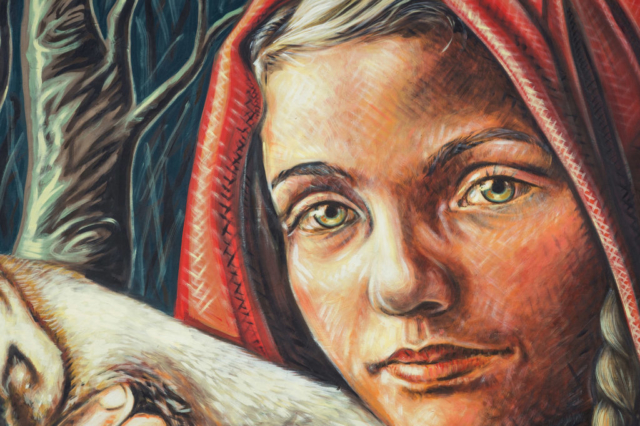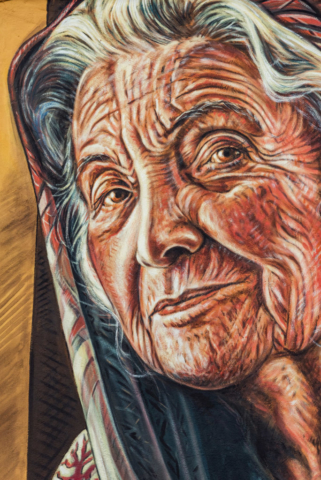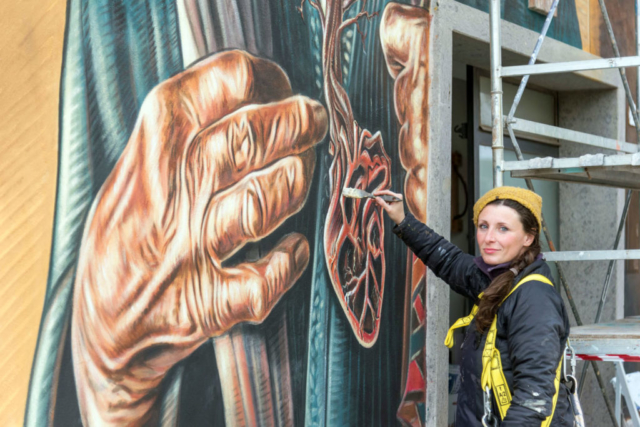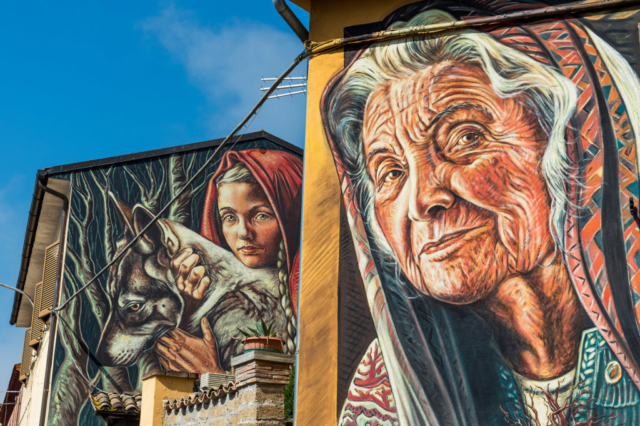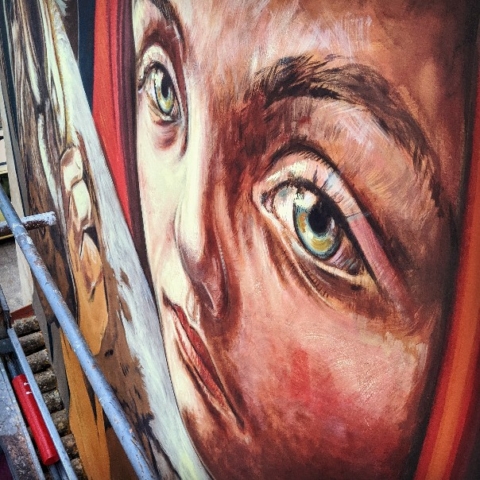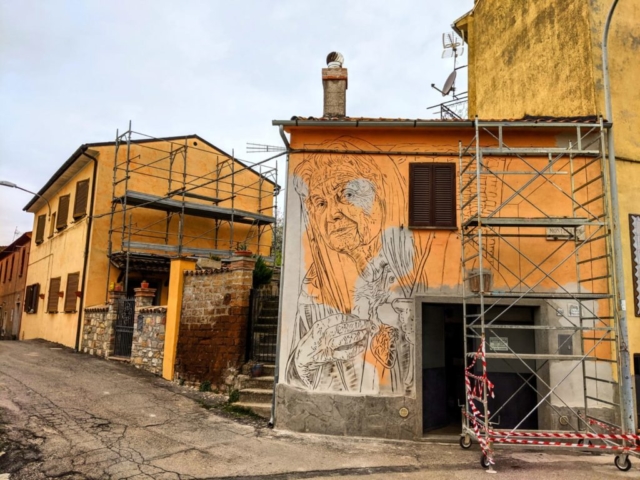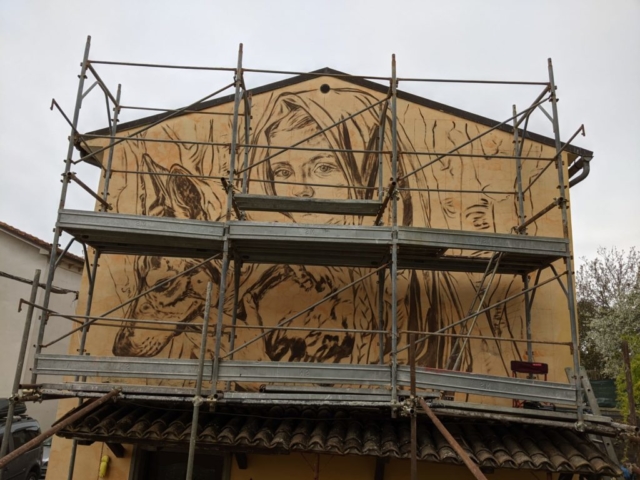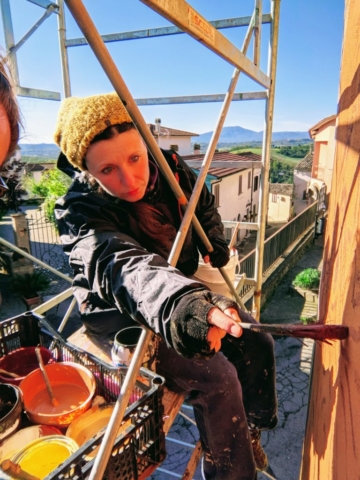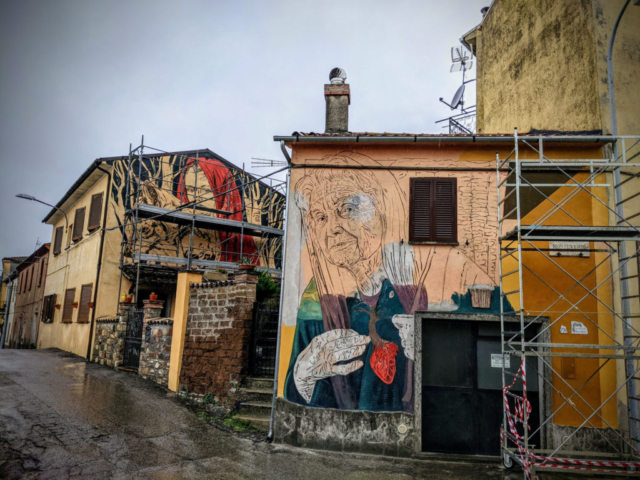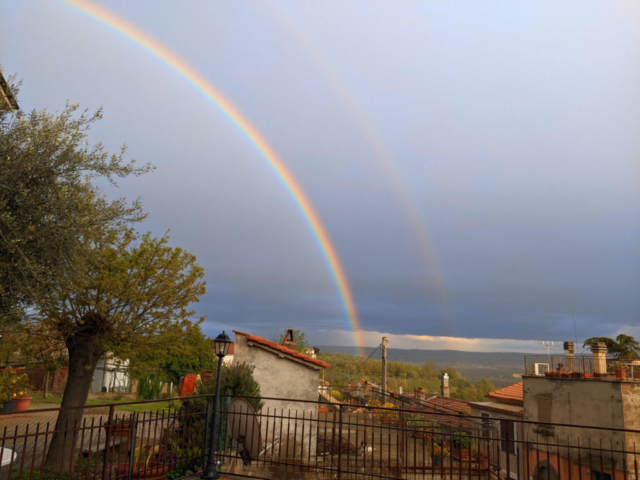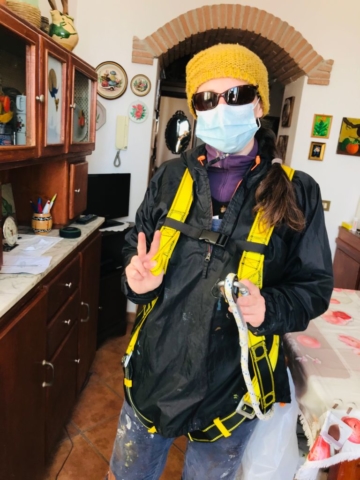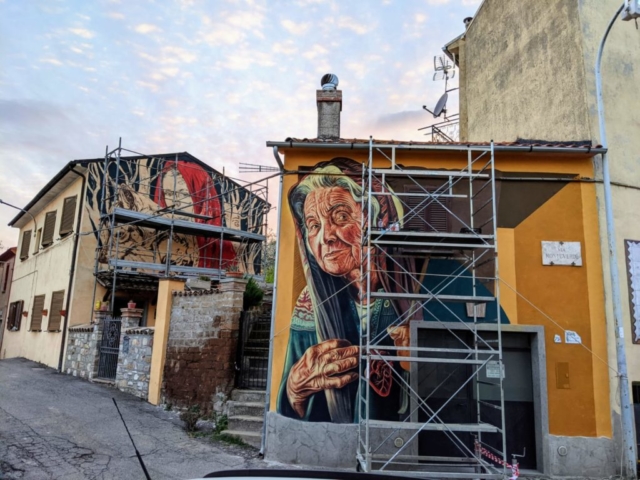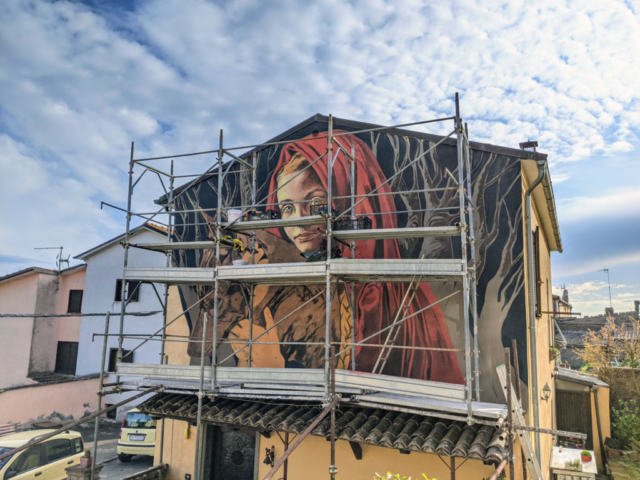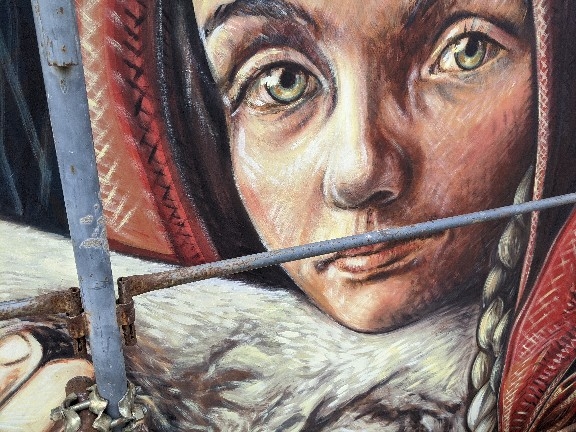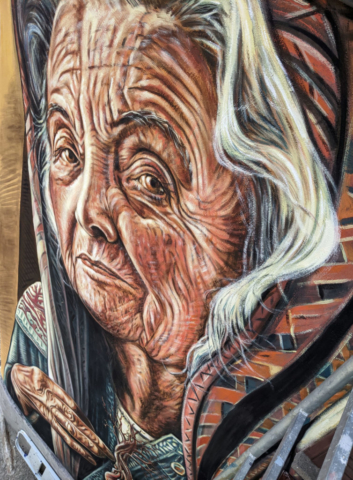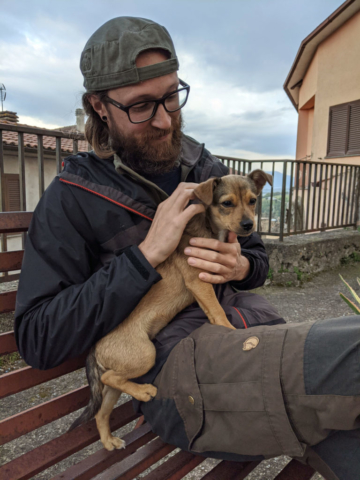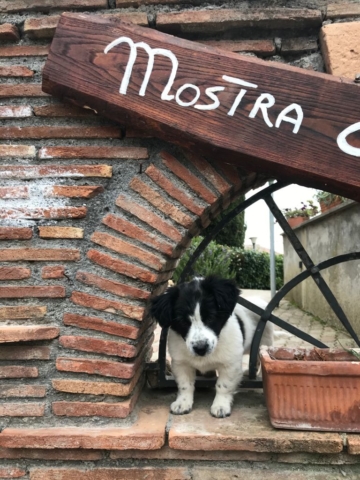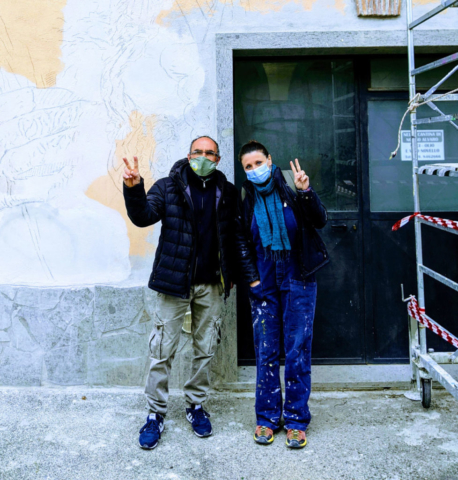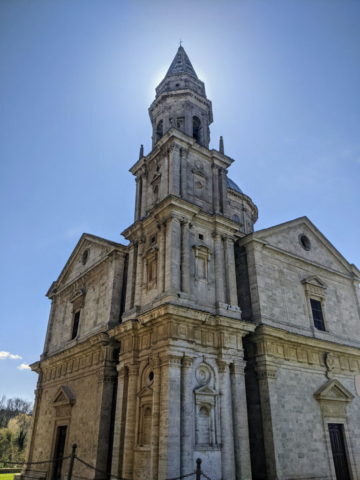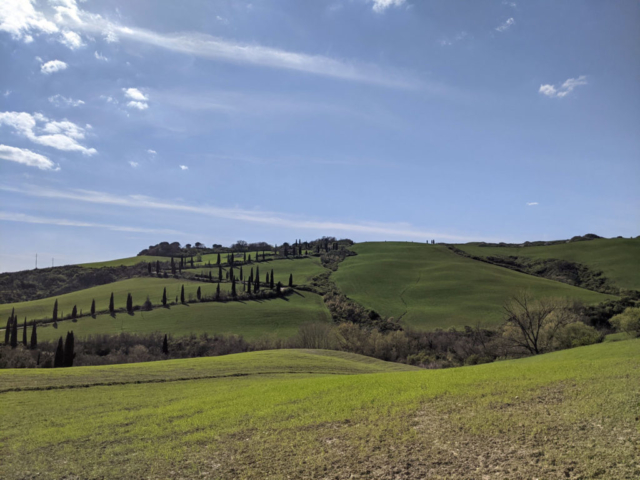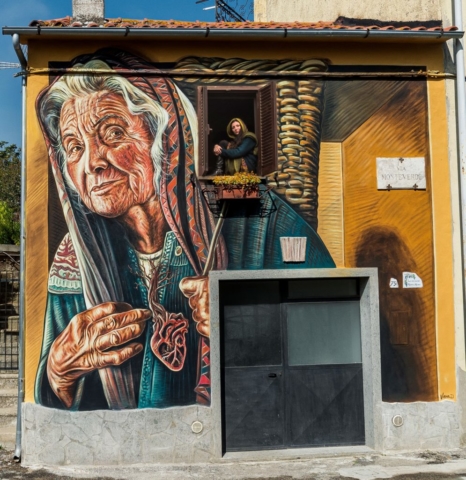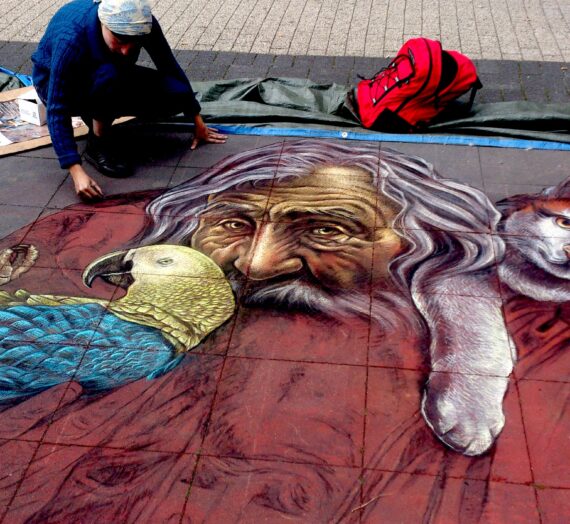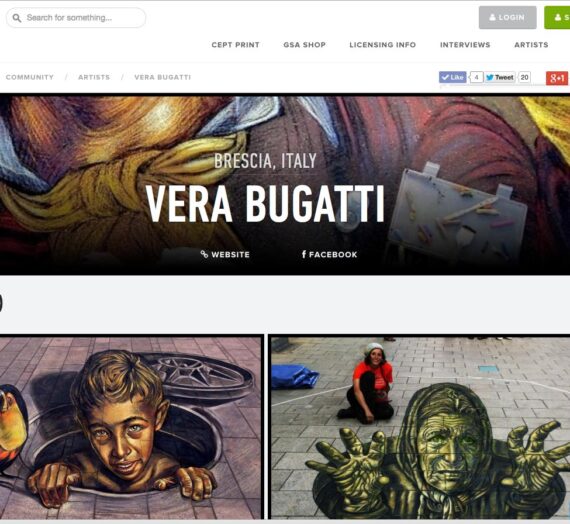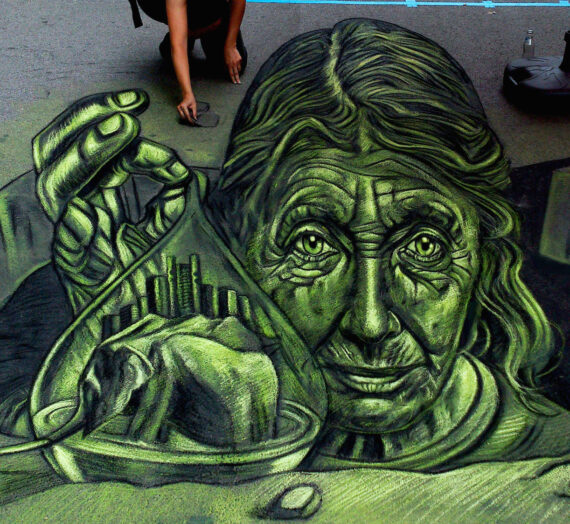Nel mese di aprile, con l’illusione di un prematuro tepore primaverile e la speranza di un allontanarsi della pandemia, sono partita verso Sant’Angelo Roccalvecce, piccolo nucleo abitato del viterbese rinominato recentemente Paese delle Fiabe.
Desideravo tornare a dipingere in esterna e il progetto bolliva in pentola dall’autunno 2020.
Sei mesi prima mi aveva contattata Alessandro Chiovelli, dell’Associazione A.C.A.S., chiedendomi di lavorare ad un progetto di arte urbana su due facciate distinte, con tematica dedicata alle fiabe.
Al momento non ero convinta, essendo abituata a creare liberamente in altri contesti, ma mi sono interrogata sulla potenza del messaggio che le fiabe veicolano, sulla tradizione orale secolare che le accompagna, ho ripensato ai loro simboli ed archetipi. Avevo a disposizione un forziere!
Quindi ho accettato con la condizione di poter interpretare a mio modo una fiaba tradizionale storica. La richiesta specifica era la fiaba europea più popolare al mondo, Cappuccetto Rosso, che probabilmente avrei scelto io stessa. Avevo già rappresentato Alice nell’opera Everyone in Wonderland is Mad, in Danimarca e mi si era aperto un mondo (non per niente era la mia fiaba preferita da bambina e il mio incubo da adulta). Era arrivato il momento dei fratelli Grimm, non vi dimorava forse la stessa fascinazione unita a mistero? Era deciso.
Di Cappuccetto Rosso esistono numerose varianti orali (pare fosse già narrata nel XIV secolo) ma le versioni scritte più note sono quella tardo seicentesca di Perrault e quella dei fratelli Grimm, di metà Ottocento.
Volevo che la mia interpretazione si svincolasse sia dalle conclusioni moraleggianti (ed angoscianti) di Perrault che dalle varianti dei Grimm, capovolgendo il racconto a mio piacere.
Ero affascinata dalla Finta nonna di Calvino (adoro Calvino) ma mi doleva che l’orchessa capitolasse a fine tanto tragica. L’idea era quella di evitare la rappresentazione di corpi estratti vivi da altri corpi straziati, dal mio stile surreale sarebbe scaturita tanta violenza e non ne volevo (ne abbiamo già abbastanza nel mondo reale).
Amo le metafore come la schiettezza ma desideravo andare oltre la morte per far nascere un progetto dedicato alla ‘cura’ e ad una rinascita che non dovesse passare per forza dal trapasso (o addirittura dall’antropofagia). Niente di edulcorato, semplicemente un monito all’azione e soprattutto all’attenzione.
L’attenzione è quindi il titolo della mia doppia opera:
Cappuccetto Rosso abbraccia un lupo dimesso guardandoci risoluta da lontano.
In primo piano, la nonna scarmigliata è pronta a partire per raggiungerla, la gerla in spalla.
Con la mano destra scosta il foulard, mostrandoci un cuore sezionato che genera e sostiene un albero semispoglio, fluttuante e vermiglio come nell’iconografia del Sacro Cuore.
È una versione moderna e ambientalista della fiaba storica, una Cappuccetto battagliera che accoglie e non demonizza la presenza del lupo.
A livello simbolico il lupo non rappresenta più il pericolo e l’ignoto, evocando al contrario un ritorno alla natura e un complicato ma necessario riequilibrio di ecosistema.
La donna anziana custodisce e mostra l’albero come parte del proprio apparato vitale. Un arbusto contorto e malato, che ancora vive.
Il bosco è come svanito, restano le urla di pochi rami piegati dalla deforestazione e dai danni causati dall’inquinamento.
È necessario prestare attenzione alla natura, averne cura, lasciarsi pervadere, oggi più che mai.
Sono stati dieci giorni di lavoro indefesso perché pioggia e vento freddo di tramontana hanno creato non pochi problemi. L’ultima mattina all’alba pure la nebbia ad impedire di fotografare le opere. Infine il sole e un cielo blu, proprio nel momento in cui si ripartiva, con recupero in corsa della macchina fotografica per avere finalmente una visione d’insieme.
Le persone a Sant’Angelo, prima titubanti, hanno poi cominciato a parlare e a chiedere del progetto. Si preoccupavano per la pioggia e il freddo, per le ore di lavoro. Il ponteggio è stato davvero smontato in tempi record per permettermi di fotografare i muri l’ultima mattina. C’era grande disponibilità ed entusiasmo da parte di tutti, c’era chi aspettava che firmassi le opere l’ultima sera già al buio e sotto la pioggia, chi ha portato caffè e doni.
Ringrazio quindi tutti partendo dagli instancabili e inseparabili Alessandro & Egle, Gianluca di ACAS, il mitico Agostino, Annalisa (e famiglie), Daniela e Tonino, Gianni e Alessio, Roberto, Rita e davvero tutti quelli che sono passati dei quali non conosco i nomi (il signore che mi portava ogni giorno una caramella, la nonna piena di buonumore che faceva le battute) e pure il Bar, Benny e Andrea per averci rifocillato.
Ultimo (ma come sempre primo nel mio cuore) Andrea Zampatti, fotografo, cuoco, autista, pittore, motivatore, talvolta pure psicologo e compagno della mia vita.
————————————————————————————————————–
L’attenzione è la forma più rara e più pura della generosità. A pochissimi spiriti è dato scoprire che le cose e gli esseri esistono. Fin dalla mia infanzia non desidero altro che averne ricevuto, prima di morire, la piena rivelazione. (Simone Weil)
(in english now)
In April, with the illusion of a premature spring warmth and the hope of a clearing of the pandemic, I left for Sant’Angelo Roccalvecce, a small town in the Viterbo area recently renamed the Country of Fairy Tales. I wanted to painting outdoors again and the project was boiling in the pot from autumn 2020. Six months earlier, Alessandro Chiovelli, from the A.C.A.S. Association, had contacted me, asking me to work on an urban art project on two distinct walls, with a theme dedicated to fairy tales.
At the time I was not convinced, being used to creating freely in other contexts, but I wondered about the power of the message that fairy tales convey, about the centuries-old oral tradition that accompanies them, I rethought their symbols and archetypes. I had a chest at my disposal! So I accepted with the condition of being able to interpret a traditional historical fairy tale in my own personal way. The specific request was the most popular European fairy tale in the world, Little Red Riding Hood, which I would probably have chosen myself. I had already represented Alice in Everyone in Wonderland is Mad, in Denmark and a world had opened up for me (not for nothing was it my favorite fairy tale as a child and my nightmare as an adult). It was time for the Grimm, did not the same fascination and mystery dwell there? It was decided.
There are numerous oral variants of Little Red Riding Hood (apparently it was already narrated in the fourteenth century) but the best-known written versions are the late seventeenth-century version of Perrault and that of the Grimm, of the mid-nineteenth century.I wanted my interpretation to break free from both Perrault’s moralizing (and distressing) conclusions and Grimm’s variants, turning the tale upside down as I pleased.I was fascinated by Calvino’s fake grandmother (I love Calvino) but I was saddened that the ogress capitulated at such a tragic end. The idea was to avoid the representation of bodies extracted alive from other torn bodies, my surreal style would have resulted in a lot of violence and I did not want it (we already have enough in the real world).I love metaphors such as frankness but I wanted to go beyond death to give birth to a project dedicated to ‘treatment’ and a rebirth that does not necessarily have to pass away (or even anthropophagy). Nothing sweetened, simply a warning to action and above all to attention.
Attention is therefore the title of my double work:Little Red Riding Hood hugs a humble wolf looking at us steadfastly from afar.In the foreground, the disheveled grandmother is ready to leave to join her, the pannier on her shoulder.With his right hand he removes the scarf, showing us a sectioned heart that generates and supports a semi-bare, floating and vermilion tree as in the iconography of the Sacred Heart.It is a modern and environmentalist version of the historical fairy tale, a combative Little Riding Hood who welcomes and does not demonize the presence of the wolf.On a symbolic level, the wolf no longer represents danger and the unknown, on the contrary evoking a return to nature and a complicated but necessary rebalancing of the ecosystem.The elderly woman guards and shows the tree as part of her vital apparatus. A twisted and diseased shrub that still lives.The forest has disappeared, the screams of a few branches bent by deforestation and the damage caused by pollution remain.It is necessary to pay attention to nature, take care of it, let yourself be pervaded, today more than ever.
It was ten days of tireless work because the rain and the cold north wind created many problems. On the last morning at dawn, even the fog prevents photographing the works. Finally, the sun and a blue sky, just as we were leaving, with the recovery of the camera on the run to finally have an overview.The people in Sant’Angelo, initially hesitant, then began to talk and ask about the project. They worried about rain and cold, about working hours. The scaffolding was really dismantled in record time to allow me to photograph the walls on the last morning. There was great availability and enthusiasm on the part of everyone, there were those waiting for me to sign the works on the last evening already in the dark and in the rain, who brought coffee and gifts. So I thank everyone starting from the tireless and inseparable Alessandro & Egle, Gianluca from ACAS, the legendary Agostino, Annalisa (and families), Daniela and Tonino, Gianni and Alessio, Roberto, Rita and really all those who have passed whose names I do not know (the gentleman who brought me a candy every day, the cheerful grandmother who made jokes) and also the Bar, Benny and Andrea for having refreshed us.Last (but as always first in my heart) Andrea Zampatti, photographer, cook, driver, painter, motivator, sometimes even a psychologist and companion of my life.
Attention is the rarest and purest form of generosity. Very few spirits are allowed to discover that things and beings exist. Since my childhood I wish nothing more than to have received, before dying, the full revelation (Simone Weil)
